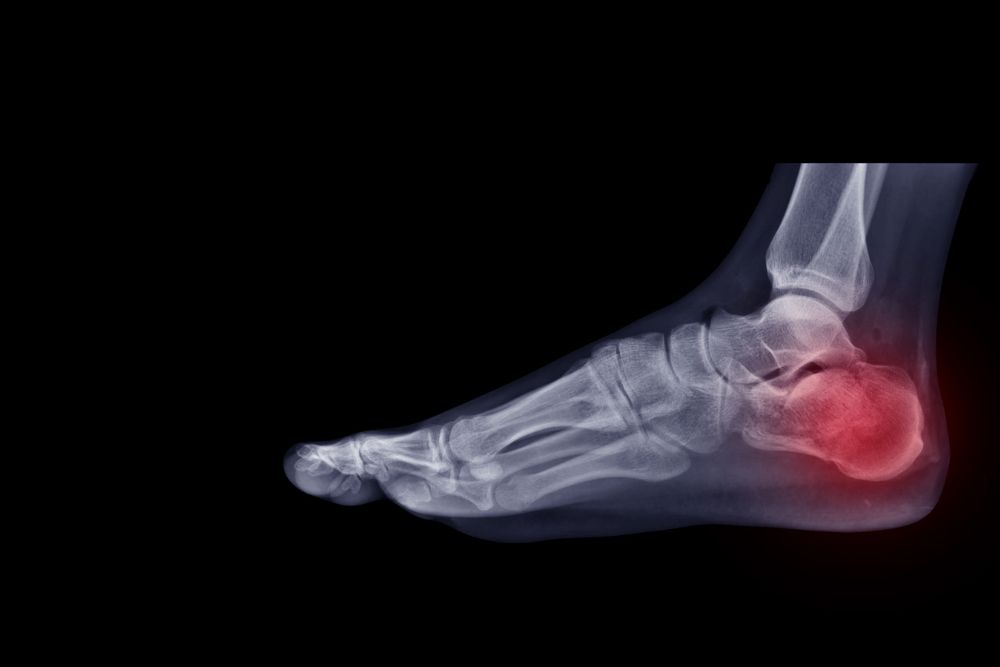Prevent a Broken Ankle from Becoming a Chronic Condition
Ankle fractures can be more serious than some other types of bone fractures due to the complexity and critical function of the ankle joint. The ankle is more delicate than you may realize and breaks when you least expect it. Such breaks could be simple and easy to fix or include several fractures requiring surgery to repair. Regardless of the severity, it’s best to be careful with your broken ankle to prevent long-term damage. Knowing what to avoid during recovery will speed healing and avoid possible consequences and chronic conditions.
Do everything possible to prevent complications and chronic conditions. One of the best treatments for ankle fractures is rehab and physical therapy. The exercises increase strength in the muscles and improve joint range of motion. Over time, your balance and flexibility will improve, allowing you to walk without the assistance of supportive devices. And before you know it, your favorite activities will be part of your routine again.
Read the tips below and avoid making things worse.

DO NOT Rush Broken Ankle Recovery
Healing a broken ankle doesn’t happen overnight, but in most cases, the bones take around two months or more to reconnect.
Of course, this doesn’t mean you’re back to your old self in six weeks. Though the bones have set, and the sutures come out, you should still be careful. You may begin putting weight on the ankle but could still require a removable boot for extra support.
The ankle is a major weight-bearing joint, crucial for walking, running, and standing. A fracture can significantly impair mobility and quality of life.
- Use supportive footwear
- Avoid high-risk activities during recovery
- Perform exercises to maintain ankle stability.
Broken ankles can lead to complications such as joint instability, chronic pain, arthritis, and decreased range of motion if not properly treated and rehabilitated. By understanding the seriousness of ankle fractures and taking appropriate steps, you can minimize the risk of chronic issues and promote effective healing.
Unfortunately, many people try to rush their recovery. They put too much weight on their ankle or spend too long on their feet. Though they may not notice any issue initially, unseen damage could occur before they know it.
For instance, putting weight on a broken ankle too soon could have alarming consequences. Fragments of the fractured bone could loosen and break off, preventing the bone from healing properly. You may also notice more pain and swelling when working the area harder than necessary, slowing your recovery.
When you try too hard to get back to your routine, you could cause more damage than the initial break. Even minor injuries could become severe issues requiring surgery to repair. To avoid extreme damage to the ankle, take it slow and follow your medical team’s instructions.
Don’t ignore rehab
Something else to avoid during recovery is ignoring rehab suggestions. Do participate in recommended physical therapy to restore strength, flexibility, and mobility.
A trained therapist creates a program to improve strength, range of motion, and balance after a broken ankle. Their guidelines include exercises to help you slowly regain these abilities. They also reduce pain and inflammation for more comfortable movements.
Avoiding these exercises slows your progress. The bones, joints, muscles, and tendons will take longer to recover, preventing you from resuming your former activities.
Broken ankle red flags
The ankle includes three bones and two joints, the tibia, fibula, and talus bones, and the ankle and syndesmosis joints. When you fracture the area, one or several bones and joints could be involved. Minor breaks might need a splint or cast to immobilize the ankle as it heals. For drastic injuries, you may need surgery, including screws, rods, or plates to hold the bones in place.
But sometimes, unexpected issues arise, which are a cause for concern. Some red flags include increased pain, swelling, tingling, numbness, or cold sensations. If you have trouble moving your toes or experience shortness of breath, seek medical attention because these could mean a serious break.
After the immediate break, you’ll likely notice immediate pain, inflammation, and tenderness, making walking impossible. After broken ankle treatment, these symptoms slowly subside, especially if you’re following your doctor’s orders.
Resources:
Mayo Clinic, Broken Ankle https://www.mayoclinic.org/diseases-conditions/broken-ankle/symptoms-causes/syc-20450025
Medline Plus, Ankle Fracture – aftercare https://medlineplus.gov/ency/patientinstructions/000548.htm
Hospital for Special Surgery (HSS), Ankle Fractures (Broken Ankle) https://www.hss.edu/condition-list_ankle-fractures.asp
Orthoinfo, Ankle fractures (Broken Ankle) https://orthoinfo.aaos.org/en/diseases–conditions/ankle-fractures-broken-ankle#:~:text=If%20you%20put%20weight%20on,after%20your%20fracture%20has%20healed
NCBI, Rehabilitation of the Ankle After Acute Sprain and Chronic Instability https://www.ncbi.nlm.nih.gov/pmc/articles/PMC164373/
This article contains informational and educational materials and does not replace health or medical advice. For questions or concerns regarding your medical condition or health objectives, speak to a qualified physician or healthcare provider.






Leave A Comment